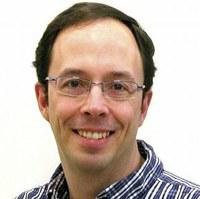3rd Annual Emeritus Reunion Lunch!
The 3rd Annual Emeritus Reunion Lunch was held on Tuesday, May 17, 2016 at the Faculty Club

Professor R J Dwayne Miller Awarded the Royal Society of Chemistry Centenary Prize 2016
The Royal Society of Chemistry (RSC) awarded Professor Dwayne Miller (Professor of Physics and Chemistry at U of T) the RSC Centenary Prize 2016 for his contributions to the development of femtosecond electron diffraction to realize the first atomic movies of chemical reactions and for his service to making science inspiring to the general public.

Professor A.W. Peet on Planet ArtSci Episode 11
Professor A.W. Peet on Planet ArtSci Episode 11: How Lego Batman explains String Theory

2016 CAP Particle Physics Division (PPD) Thesis Award Recipient
The 2016 CAP Particle Physics Division (PPD) Thesis Award Recipient is former U of T Physics graduate student Patrick de Perio

2016 CAP University Prize Exam Results
U of T takes 2nd, 7th and 10th of the top 10 Spots in Canada!

Prof. Thywissen's Group Discovers New Laws Governing the “Developmental Biology of Materials”
When one atom first meets another, the precise nature of that interaction can determine much about what kinds of physical properties and behaviours will emerge.
In a paper published today in Nature Physics, a team led by U of T physicist Joseph Thywissen reported their discovery of a new set of rules related to one particular type of atomic-pair interaction. The researchers study interactions between atoms that have been cooled close to absolute zero.
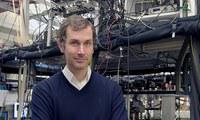
Researchers demonstrate 'quantum surrealism'
New research demonstrates that particles at the quantum level can in fact be seen as behaving something like billiard balls rolling along a table, and not merely as the probabilistic smears that the standard interpretation of quantum mechanics suggests. But there's a catch - the tracks the particles follow do not always behave as one would expect from "realistic" trajectories, but often in a fashion that has been termed "surrealistic."
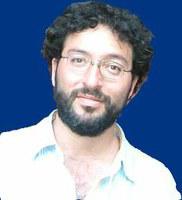
Steven Schramm recipient of 2015 ATLAS Thesis Award
ATLAS Thesis Awards Committee is pleased to announce the four winners of the 2015 ATLAS Thesis Awards
for outstanding contributions to ATLAS in the context of a Ph.D. thesis.
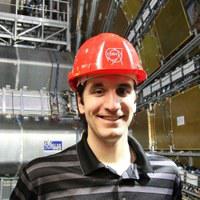
Gravitational waves detected for 1st time by LIGO and U of T astrophysicists
Gravitational waves, ripples in space-time predicted by Einstein's general theory of relativity 100 years ago, have finally been detected.
"Ladies and gentlemen, we have detected gravitational waves. We did it," announced Dave Reitze, executive director of the U.S.-based Laser Interferometer Gravitational-Wave Observatory (LIGO) at a news conference Thursday morning.
Scientists said gravitational waves open a door for a new way to observe the universe and gain knowledge about enigmatic objects like black holes and neutron stars. By studying gravitational waves they also hope to gain insight into the nature of the very early universe, which has remained mysterious.
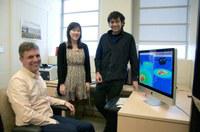
Celestica, CERN, and the University of Toronto Collaborate on Enabling Advanced Research for the Large Hadron Collider
Celestica Inc. (NYSE, TSX: CLS), a global leader in the delivery of end-to-end product lifecycle solutions, today announced that in collaboration with international researchers from the ATLAS experiment at CERN, the European Organization for Nuclear Research and the University of Toronto, they have produced a radiation-hard sensor for the Large Hadron Collider (LHC), the world’s largest and most powerful particle collider.

Prof. Hirohisa Tanaka and Prof. John Martin Share Breakthrough Prize in Fundamental Physics
University of Toronto physicists are on two of the five teams receiving the Breakthrough Prize in Fundamental Physics tonight for major insights into the deepest questions of the Universe.
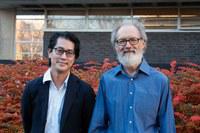
Fingerprinting: quantum beats classical
Researchers demonstrate the first quantum fingerprinting system that transmits less information than the best known classical protocol.
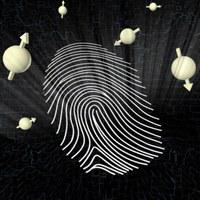
2015 Nobel Prize in Physics awarded to Canadian Arthur McDonald
Arthur McDonald, a professor emeritus at Queen's University in Kingston, Ont., is the co-winner of the 2015 Nobel Prize in physics. McDonald will share the prize with Takaaki Kajita of the University of Tokyo.

Climate Change: One of the Grand Challenge Problems in All of Science - Interview with Dick Peltier
Usually the problem of climate change is solely described as the increase in temperature since the beginning of the industrialization of the Northern Hemisphere. People discuss the impact of rising temperatures on the Arctic, but how does climate change affect us on a regional scale, where we actually live?

Written in Light - Interview with Aephraim Steinberg
Do you remember tin can telephones? You and a friend would each be holding an empty can, connected by a string stretched out tightly. You could speak to one another, with the string carrying the sound waves from one end to the other.

New CIFAR research program co-directed by R.J. Dwayne Miller and Oliver P. Ernst advertised in The Globe and Mail.

Retreating sea ice could mean a colder Europe
Professor G.W.K. Moore and his colleagues in Great Britain, Norway and the United States have published a paper in Nature.com raising awareness of the fact that retreating sea ice in the Iceland and Greenland seas may be changing the circulation of warm and cold water in the Atlantic Ocean and could ultimately affect the climate in Europe.
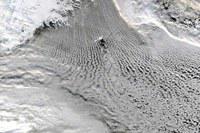
What’s the easiest tool to explain the most complex ideas in physics? Lego
Professor A.W. Peet featured in the National Post on May 6, 2015 in advance of her lecture at the Perimeter Institute.

U of T Physics Rises to the WxChallenge
Congratulations to members of our Department for their achievements during this year's WxChallenge weather forecast competition.
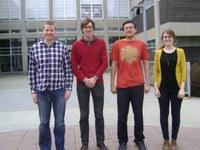
Jake Klamka who did his Masters and Undergraduate degree at U of T Physics mentioned in Nature
Industry allure: PhD holders with quantitative skills are landing posts at technology companies.

Quantum cryptography at the speed of light
Department of Physics Professor Hoi-Kwong Lo in collaboration with Dr. Azuma and Dr. Tamaki of the Nippon Telegraph and Telephone Corporation in Japan design first all-photonic repeaters

2015 CAP University Prize Exam Results
U of T takes 1st, 7th, 8th and 9th of the top 10 Spots in Canada!

Mr. Yige Chen under the supervision of Prof. Hae-Young Kee has identified a new class of metal in Iridium oxides. Read all about it in Nature Communications
We used to think that different phases such as liquid, solid, and magnets are classified by broken symmetries, however, it was recently found that distinct phases without any broken symmetry are found due to their non-trivial topological nature.
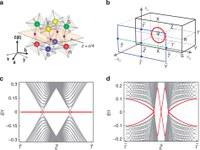
Prof. John Martin receives the 2015 CAP Medal for Lifetime Achievement in Physics
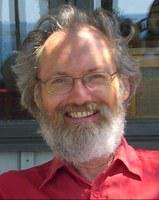
Prof. Pierre Savard receives the 2015 CAP-TRIUMF Vogt Medal for Contributions to Subatomic Physics
